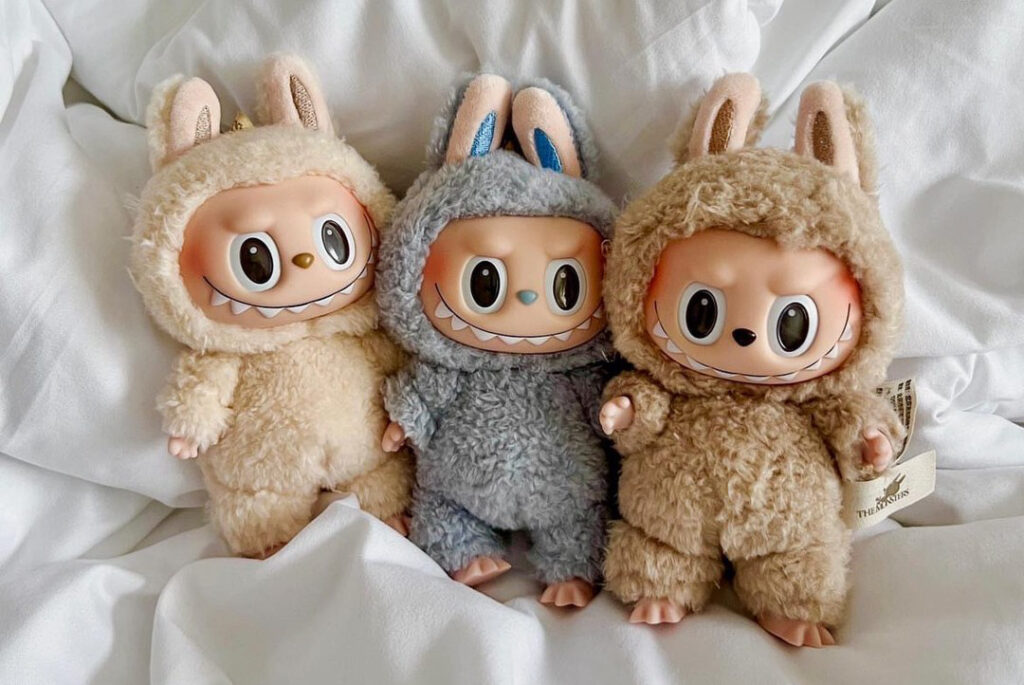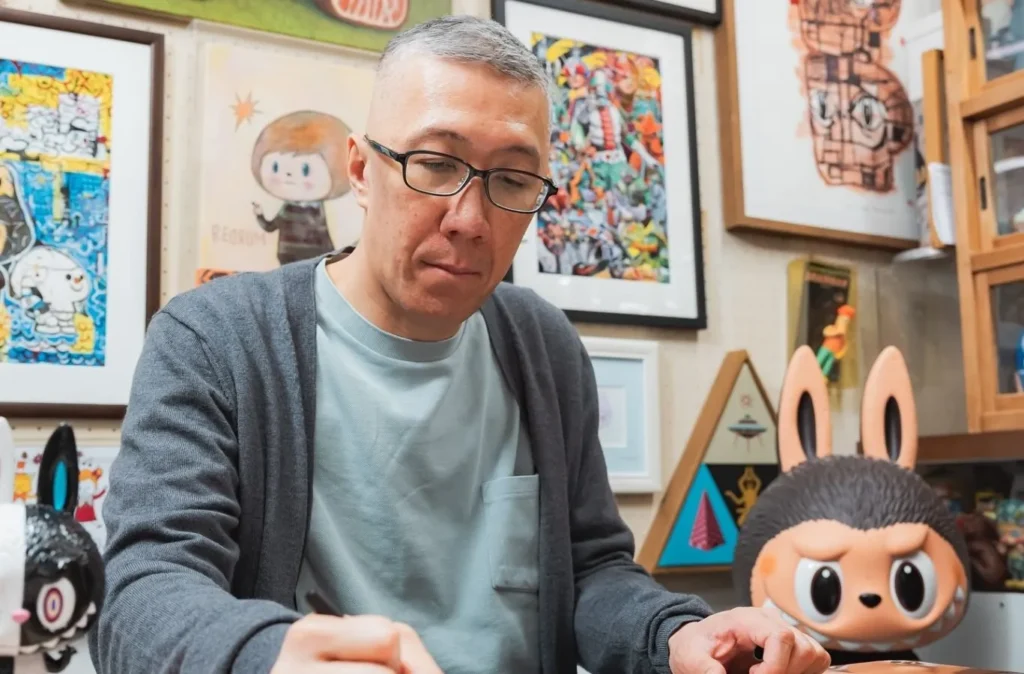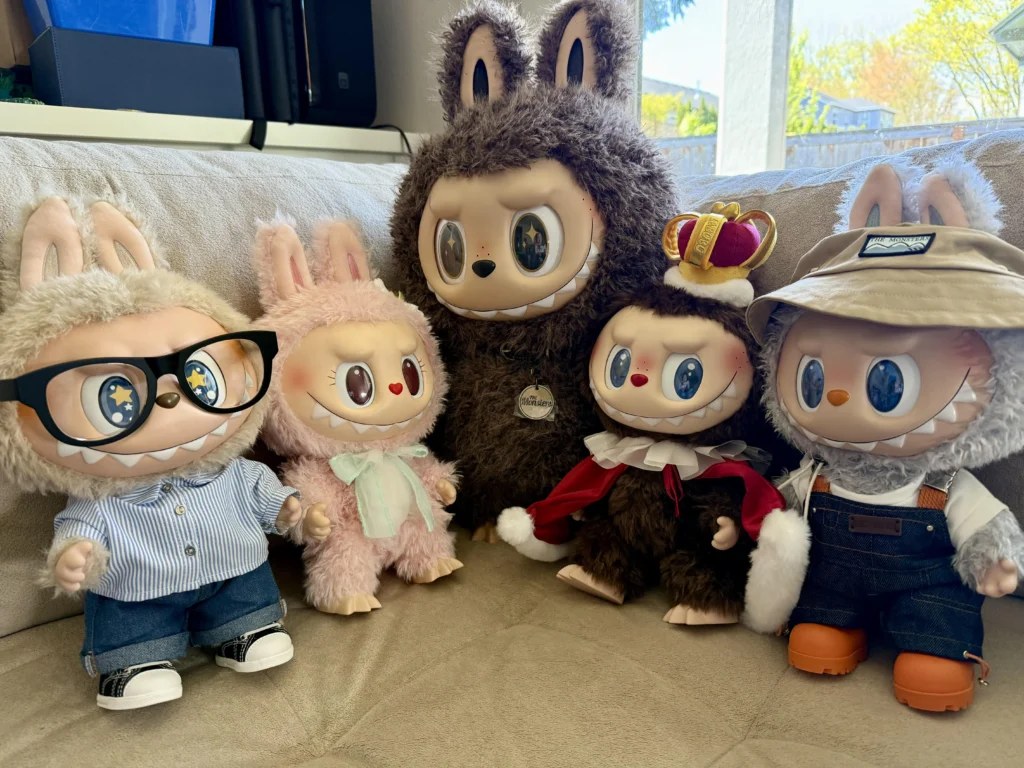Labubu 101: The Essential Collector Guide
Over the past six months, queues outside Pop Mart stores from Sydney’s Pitt Street to Chicago’s Michigan Avenue have become a familiar sight. Some fans arrive before dawn, umbrellas in hand, for a one-in-seventy-two shot at the rare “secret” edition of Labubu; others simply hope to snag any figure before resellers triple the price online. What started as niche hype has evolved into a data-backed global boom fuelled by TikTok loops, limited drops and a collector demographic that skews 18-35.
Yet for all the frenzy, many newcomers still ask the same basic question: Who—or what—exactly is Labubu? The answer winds through art-school sketchbooks, Nordic folklore, modern scarcity economics and a fandom that blurs the line between consumer and co-creator. Let’s unpack the design, psychology and business mechanics behind the vinyl imp that’s reshaping the designer-toy market.
Who—or What—Is Labubu?
Labubu sprang from the sketchbooks of Hong Kong–born, Netherlands-raised illustrator Kasing Lung. The snaggle-toothed sprite first appeared at small Asian art fairs around 2011, slipped quietly into Lung’s broader The Monsters universe, and landed a 2017 trial run with Pop Mart before securing an exclusive licence in 2019. The design blends Nordic forest-troll folklore with mischievous picture-book charm: oversized ears, saw-blade grin and eyes that read “feral but friendly.”
Standard vinyl editions stand 6-7 inches tall, but scale isn’t fixed; mega figures, plush pendants and even bubble-tea keyrings expand the lineup. Each new medium preserves the core silhouette—long ears, barrel torso—so veteran collectors spot a genuine Labubu instantly, whether it’s a palm-sized blind-box pull or a two-foot display piece in a Beijing flagship window.
The Aesthetics of “Ugly-Cute”
Psychologists call the appeal of characters like Labubu “sweet-grotesque.” When infant-coded proportions (big head, round belly) collide with mildly menacing details (sharp teeth, sunken eyes), the brain experiences a jolt of novelty instead of disgust. Controlled studies rank such designs as more “interesting” than purely cute mascots—exactly the type of micro-engagement TikTok rewards, propelling millions of unboxing loops and reaction stitches.
Fans articulate the effect in simpler terms: It looks naughty, but you still want to hug it. That tension grants the figure emotional range. A glow-in-the-dark variant can read spooky in low light, while a macaron-pastel edition feels almost edible. Same mould, different mood—one reason collectors shell out for multiple colour-ways without feeling repetitive.
From Indie Mascot to Billion-Yuan Business
Pop Mart’s latest financials list ¥13 billion RMB (≈ US $1.8 billion) in annual revenue—double the prior year. Four cornerstone IPs drove the surge, but Labubu and friends crossed the ¥1-billion line on their own. Behind the numbers lies an infrastructure of 500-plus flagship stores across 30 countries, 2,300 “Robo Shop” vending machines and an e-commerce backend capable of flash-selling tens of thousands of blind boxes in minutes.
The scale hasn’t diluted scarcity. Supply is metered through regional allocations and staggered drop calendars, so even mainstream exposure preserves the lottery thrill. Limited inventory plus viral visibility equals aftermarket heat—an equation Pop Mart now treats as a replicable template for new IP launches.
The Blind-Box Mechanics
Every Labubu wave follows a discipline: twelve standard designs and one “secret” figure hidden at 1-in-72 odds. A sealed case of 12 offers no guarantees, pushing completionists toward full-case purchases or community trades. Retail pricing hovers around US $12-15 for vinyl minis and US $28 for plush pendants, but chase models rocket to triple digits on StockX and regional resale apps within hours of release.
Scarcity feeds engagement loops well beyond the point-of-sale. Collectors livestream peel-tab reveals, track duplicate ratios in spreadsheets and swarm swap-meets to bridge gaps. In effect, the blind-box is both product and social mechanic—a built-in conversation starter that keeps fans talking (and buying) long after launch day.
Who Is Buying?
Third-party surveys place the core customer among urban Millennials and Gen Z: digital-native, design-conscious and roughly 60 percent female. For this cohort, blind boxes serve dual roles—self-care treat and content engine. A single unboxing clip can pull thousands of views; a photo carousel of Labubu dioramas garners instant likes in toy-photography circles.
Offline, Discord, WhatsApp and WeChat groups coordinate bulk orders and “case-splits,” transforming solitary purchases into communal rituals. The social layer reduces buyer fatigue and reinforces loyalty: even if you strike out on a chase figure, the group chat sticks around to celebrate the next drop.
Culture, Customisation & Community
Beyond retail counters, Labubu has ignited a cottage industry of DIY repaint artists, miniature-set photographers and convention meet-ups. Open-platform marketplaces list hundreds of unique custom sculpts—gold-leaf editions, cyberpunk paint-ups, Ukiyo-e tributes—while the annual Pop Mart Beijing Expo devotes an entire hall to fan-art competitions. The IP has moved from product to participatory culture.
That shift benefits Pop Mart as much as fans. Every custom post or diorama scene functions as free advertising, extending the brand’s reach into subcultures Pop Mart’s own marketing budget could never map. In an attention economy, embrace-and-amplify beats cease-and-desist every time.
The Take-Away
Asking “What is Labubu?” opens a much larger conversation about how art, scarcity economics and algorithm-driven culture mesh in twenty-first-century collecting. The character’s serrated grin may look mischievous, but the numbers behind its rise—record revenues, global queues and a fan base that treats vinyl like fine art—tell a disciplined business story.
Whether you’re peeling your first blind-box foil or negotiating a grail-level trade, remember: Labubu is modern pop-culture alchemy in six-inch vinyl form—equal parts artwork, investment asset and community handshake. The magic lies in how those elements interlock, turning a quirky forest imp into a worldwide phenomenon.






